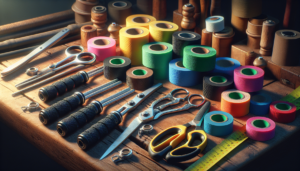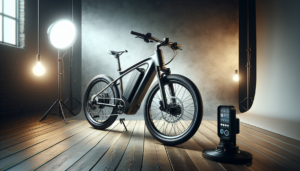Choosing the right bike size for your 8-year-old child is crucial to ensure their safety, comfort, and enjoyment while riding. As a parent, you want to make sure that your child’s bike fits them properly, allowing them to develop their skills and confidence on two wheels. In this comprehensive guide, we’ll explore the key factors to consider when selecting a bike for an 8-year-old, including the importance of proper fit, understanding bike sizes, and essential safety gear.
Introduction to Choosing the Right Bike Size for an 8 Year Old
Why Proper Bike Fit is Crucial
A properly fitted bike is essential for your child’s health and safety. A bike that is too large or too small can lead to discomfort, difficulty controlling the bike, and potentially dangerous situations. When a bike fits well, your child will have better balance, more confidence, and greater enjoyment while riding.
Proper bike fit also promotes good posture and reduces the risk of strain on your child’s muscles and joints. A comfortable riding position helps prevent fatigue and encourages your child to ride more often, developing their skills and fitness.
Understanding Bike Sizes: Wheel Diameter vs. Frame Size
When shopping for a kids’ bike, it’s essential to understand that bike sizes are primarily determined by wheel diameter, not frame size. While adult bikes are typically measured by frame size, children’s bikes are classified by the diameter of their wheels, such as 12-inch, 16-inch, or 20-inch.
Keep in mind that wheel size is not the only factor affecting bike fit. The frame size, seat height, and handlebar position also play crucial roles in ensuring a comfortable and safe riding experience for your child.
Key Measurements for Sizing: Height and Inseam Length
How to Measure Your Child’s Height and Inseam
To determine the appropriate bike size for your 8-year-old, you’ll need to measure their height and inseam length. Height is measured from the ground to the top of your child’s head, while inseam length is measured from the ground to your child’s crotch, with shoes on.
To measure inseam length:
- Have your child stand against a wall with their feet slightly apart.
- Place a book between their legs, pressing it gently against their crotch.
- Mark the top of the book on the wall.
- Measure the distance from the ground to the mark.
Using a Kids Bike Size Chart
Once you have your child’s height and inseam measurements, consult a kids bike size chart to find the recommended wheel size for their age and size. These charts provide general guidelines based on average child sizes, but it’s important to remember that every child is unique.
| Age | Height | Inseam | Wheel Size |
|---|---|---|---|
| 3-5 years | 38-48 inches | 14-18 inches | 12-14 inches |
| 4-6 years | 40-48 inches | 16-20 inches | 16 inches |
| 5-8 years | 44-52 inches | 18-24 inches | 20 inches |
| 7-11 years | 48-56 inches | 22-26 inches | 24 inches |
Common Bike Sizes for 8 Year Olds
Overview of 20-Inch Wheel Bikes
For most 8-year-olds, a 20-inch wheel bike is the ideal size. These bikes offer a comfortable fit for children with an average height of 44 to 52 inches and an inseam length of 18 to 24 inches. 20-inch wheel bikes often feature more advanced components, such as hand brakes and gear systems, making them suitable for more confident riders.
When choosing a 20-inch wheel bike, consider factors such as frame material, brake type, and the number of gears. Lightweight aluminum frames are popular for their durability and maneuverability, while steel frames offer a more classic look and feel. Coaster brakes are common on smaller bikes, but hand brakes provide better control and stopping power for more advanced riders.
Other Suitable Bike Sizes
While 20-inch wheel bikes are the most common choice for 8-year-olds, some children may be more comfortable on a slightly smaller or larger bike, depending on their individual size and skill level.
- 16-inch wheel bikes: Suitable for smaller 8-year-olds or those still developing their confidence on two wheels.
- 24-inch wheel bikes: Appropriate for taller 8-year-olds or those ready for a more advanced bike.
If your child is between sizes, it’s generally better to choose the smaller option to ensure a comfortable and safe ride. Avoid the temptation to buy a bike that’s too large for your child to “grow into,” as this can lead to an unsafe and unenjoyable riding experience.
Types of Bikes for Kids
Balance Bikes vs. Pedal Bikes
Balance bikes are pedal-less bikes designed for toddlers and young children learning to ride. These bikes help develop balance and coordination without the added complexity of pedals. For most 8-year-olds, a pedal bike is more appropriate, as they have likely already mastered the basics of balancing and steering.
Small wheelers, typically featuring 12 to 14-inch wheels, are the first pedal bikes for children aged 3 to 5 years. Middle wheelers, with 16-inch wheels, are suitable for children aged 4 to 6 years. By the time a child reaches 8 years old, they are usually ready for a 20-inch wheel bike.
Specialty Bikes: BMX, Mountain, and Road Bikes
In addition to standard pedal bikes, there are several specialty bike types available for kids, each designed for specific riding styles and terrains.
- BMX bikes: Featuring 20-inch wheels, these bikes are designed for dirt racing and tricks. They often have a single gear and are built for durability.
- Mountain bikes: With rugged tires and suspension systems, mountain bikes are designed for off-road riding on trails and rough terrain.
- Road bikes: Featuring lightweight frames, narrow tires, and multiple gears, road bikes are designed for speed and efficiency on paved surfaces.
When choosing a specialty bike for your 8-year-old, consider their interests, skill level, and the type of riding they will be doing most often.
Ensuring Safety and Comfort
Importance of Test Rides
Once you’ve narrowed down your bike options based on size and type, it’s crucial to have your child take a test ride before making a final decision. A test ride allows your child to experience the bike’s fit, balance, and overall feel, ensuring that they are comfortable and confident while riding.
During the test ride, observe your child’s posture and riding position. Their feet should touch the ground comfortably when seated, and they should be able to reach the handlebars and brake levers easily. If the bike seems too large or small, consider adjusting the seat and handlebars or trying a different size altogether.
Adjustable Features for Growing Kids
As children grow rapidly, it’s essential to choose a bike with adjustable features that can accommodate their changing size. Look for bikes with adjustable seat posts and handlebars, which can be raised or lowered to ensure a proper fit as your child grows.
Some bikes also feature adjustable crank arms, which can be lengthened or shortened to match your child’s leg length. This feature is particularly useful for ensuring a comfortable pedaling position and reducing strain on your child’s knees.
Essential Safety Gear: Helmets and More
No matter how skilled your child is on their bike, safety gear is non-negotiable. A properly fitted helmet is the most critical piece of safety equipment, protecting your child’s head in the event of a fall or collision.
When choosing a helmet, look for a snug and comfortable fit that sits level on your child’s head. The helmet should not move when your child shakes their head, and the straps should form a “V” shape under their ears and fasten securely under their chin.
In addition to a helmet, consider other safety gear such as elbow and knee pads, gloves, and reflective clothing to increase your child’s visibility and protection while riding.
Additional Tips for Parents
Encouraging Your Child to Participate in the Selection Process
Involving your child in the bike selection process can help ensure that they end up with a bike they love and feel confident riding. Encourage your child to express their preferences for color, style, and features, and take their opinions into account when making a final decision.
By giving your child a sense of ownership over their bike, you can help foster a love for riding and a sense of responsibility for their new vehicle.
Resources for Learning to Ride and Bike Assembly
If your child is still learning to ride or you need help assembling their new bike, there are many resources available to assist you.
- Bike shops often offer riding lessons and workshops for children of all ages and skill levels.
- Online tutorials and videos can provide step-by-step instructions for assembling and maintaining your child’s bike.
- Local parks and recreation departments may offer bike safety courses and group rides for children and families.
By taking advantage of these resources, you can help your child develop their skills and confidence on two wheels, while ensuring that their bike is properly assembled and maintained for safe riding.
Conclusion
Choosing the right bike size for your 8-year-old is a critical decision that can impact their safety, comfort, and enjoyment while riding. By measuring your child’s height and inseam length, consulting a kids bike size chart, and considering factors such as bike type and adjustable features, you can find the perfect bike for your growing rider.
Remember to prioritize safety by investing in essential gear like helmets and pads, and take advantage of resources for learning to ride and bike maintenance. With the right bike and a supportive environment, your child can develop a lifelong love for cycling and the many benefits it provides.






